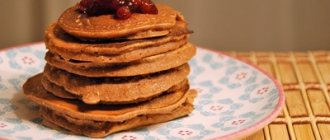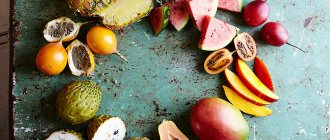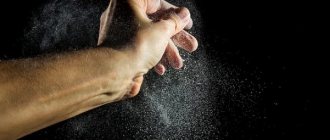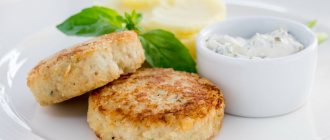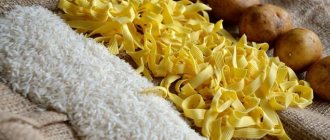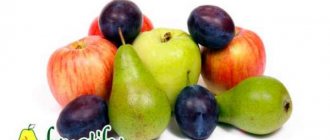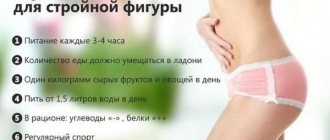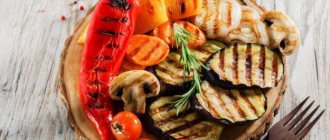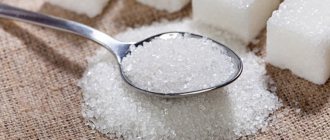Composition of rice flour
Rice flour contains 360 kcal/100 g. The figure varies depending on the type of rice. Cereals can contain approximately 80 g of carbohydrates, so you should not overuse baked goods made from rice flour. White flour contains about six grams of protein and up to one and a half grams of fat. In brown flour, the indicators are higher by a gram and a half. Brown flour contains 76 g of carbohydrates.
Brown and gray flour has a high content of vitamin B, which is necessary for the formation of immunity. There is a large amount of vitamin E. It maintains water balance in the body. In addition, rice flour contains enough:
- calcium;
- gland;
- magnesium;
- phosphorus;
- Selena.
Cereals are also rich in copper, which regulates the functioning of the heart and helps provide the body with the volume of blood that is needed. Due to its low protein content, rice flour is combined with protein foods.
Calorie content and consumption rate
You probably don't wonder how many calories are in flour when you're cooking, right? It turns out that we are more often worried about the calories in a Charlotte or Big Tasty burger than in flour. Of course, no one would even think about how many calories are in tea or a coffee drink—cappuccino—, and the reason for this is the belief that the drinks are completely calorie-free, and even if there are calories, they are few. Indeed, there are very few of them there, but the same cannot be said about flour.
Many women and girls have been accustomed to using wheat flour since Soviet times, because, basically, only this product could be found on store shelves. But in our time, everything has changed, and there is an incredible variety of different types of flour, the calorie content of which we will talk about below.
Delicious recipe! Cooking pea soup with beef
Is there a type among them that could replace wheat flour, cook delicious cakes with it, and at the same time lose weight? Yes, there definitely is! And what kind of species this is, you will find out below!
Calorie content of wheat flour
Wheat flour is a product that every housewife has in her home. It is made from wheat grains, has a slight smell of bread and does not have any distinct taste at all. Its calorie content per 100 grams is 364 kcal.
Calorie content of oatmeal
Oatmeal is usually called medicinal, because the oats from which it is made provide the body with many useful vitamins and minerals. This flour is used to prepare PP cakes, pastries and other flour sweets (PP from the phrase “proper nutrition”) - such desserts are those that have a completely natural composition, without chemical additives, and with a minimum amount of calories. And although the calorie content of oat flour is not much different from wheat flour - 369 kcal per 100 grams, it has much more benefits.
Calorie content of rice flour
This type is also used in preparing “proper” dishes. It does not contain gluten, which means it can be safely consumed by people with allergies. This type is mainly common in Asian countries, but in recent years this flour has also begun to gain popularity here. Its calorie content per 100 grams is 366 kcal.
Calorie content of corn flour
There are different versions of this flour, in some the calorie content per 100 grams is 370 kcal, in others - 330 kcal. Of course, if you see the second option on the counter, buy it without hesitation. There is not much difference between them, even if you take the higher calorie option. The fact is that corn flour retains a maximum of its beneficial components, and it is often recommended to be used in cooking for those who are on a diet due to illness or are losing weight. It is also called diet flour.
Calorie content of whole grain flour
This is a subtype of wheat flour that contains fewer calories than regular flour. This is approximately 340 kcal per 100 grams. This product is used to make whole grain bread and crispbreads, which are considered very healthy. They retain a maximum of substances that the body needs for normal functioning. For diet and proper nutrition, this option is definitely suitable.
Calorie content of flaxseed flour
This option is considered very low-calorie, and at the same time, very healthy. The calorie content per 100 grams of flaxseed flour will be 270 kcal, and the composition contains vitamins such as A, H, E, D and the entire group of vitamins B. In addition, the composition also contains healthy fatty acids, including Omega-3 and Omega-6. An excellent choice for those who are losing weight and maintaining a healthy diet.
Calorie content of rye flour
Everyone knows that rye bread is very healthy because it contains many vitamins and minerals. It is made from rye flour, which means it will have a beneficial effect on the human body if you make pies or cakes from it. Calorie content per 100 grams is 349 kcal.
Calorie content of buckwheat flour
Like the options described above, buckwheat flour is also actively used in dietary nutrition. It contains many vitamins, as well as iron, iodine, potassium and other useful compounds. Its calorie content per 100 grams is 353 kcal.
Calories in coconut flour
Have you ever heard that coconut is used to make flour? Yes, indeed, this type also exists. Coconut flour is very similar to wheat flour in consistency, but it contains much more useful components than the usual version. However, the calorie content of coconut flour is very high - 466 kcal per 100 grams. Despite the fact that this is a fairly large indicator, this type still remains one of the most useful, even on a diet.
Almond flour calories
This option is very expensive, but very tasty and healthy. The famous French macarons cake is made from this flour, and believe me, you simply cannot recreate this unique taste with any other flour. The calorie content of almond flour is 602 kcal per 100 grams. Yes, the number of calories is crazy, but there will definitely be benefits from this product. And it lies in the fats that this flour contains. But, unfortunately, it is not recommended to be consumed as part of a diet.
Calorie content of soy flour
Like any soy product, this flour is useful for those who have intolerance to all other types or an increased allergic reaction. There are two subtypes - low-fat soy flour and non-defatted soy flour. Of course, both options are suitable for dietary nutrition, but one simply contains fewer calories, while the other contains more. Low-fat soy flour has 299 kcal, and non-defatted soy flour has 385 kcal.
| Type of flour | Calorie content per 100 g |
| Wheat | 364 kcal |
| Oatmeal | 369 kcal |
| Rice | 366 kcal |
| Corn | 330-370 kcal |
| Whole grain | 340 kcal |
| Linen | 270 kcal |
| Rye | 349 kcal |
| Buckwheat | 353 kcal |
| Coconut | 466 kcal |
| Almond | 602 kcal |
| Soy | 299-385 kcal |
Useful properties of rice flour
Rice cereals are better than other cereals in being able to cleanse the body of toxins and undigested food residues. It has a beneficial effect on the intestines, soothes the intestinal walls and activates blood flow. This way the digestive process is much better.
Rice, like rice flour, should be included in the diet of people suffering from gastritis and other gastrointestinal disorders. Pancreatitis is also included in this list. It is best for the patient to consume purees or broths made from rice flour. Various cereals will be useful.
The main healing properties of rice:
- Relieving swelling and removing excess fluid;
- protection of the digestive system from disorders (due to the absence of not only gluten, but also gluten, fermentation processes, gases and other discomfort do not occur in the intestines);
- Due to its cleansing properties, rice should be consumed after poisoning, during colds and a long course of antibiotics.
Rice cereal helps with varicose veins and various types of swelling. Rice is good for the liver; it is used for atherosclerosis and hypertension. Not only the heart muscle is strengthened, but also excess cholesterol is removed. Diabetics can add rice cereal to sauces and soups made from low-calorie foods. Various vegetable stews and broths will also provide significant benefits.
The benefits of rice flour for weight loss are completely justified. Rice can not only cleanse the intestines, but also maintain strength throughout the day. It must be borne in mind that rice cereal does not contain all useful vitamins, so it should be used exclusively to cleanse the body. From two to three days you can cook porridge with water, kefir cocktails with the addition of rice flour. It is enough to carry out cleaning once every six months. Next should be a balanced diet consisting of vegetables and fruits. If you still decide to cleanse your body, then you should add no more than 80 g of rice cereal to one serving of dietary food. This food is combined mainly with eggs, dairy products and vegetable purees. If there is a lot of cereal, the body will experience a process of dehydration, or weight loss will be delayed.
When it comes to baby food, rice-based products only help to ease digestion. In Asian countries, this cereal is used in infant formula as a thickener. Children can be given products based on rice flour after one year.
Rice flour is actively used in cosmetology. It is included in many scrubs, lotions, tonics and tinctures. Rice can have a beneficial effect on the skin: it gets rid of acne. Rice flour gives hair elasticity.
Use in home medicine
Rice flour has also found its use in folk medicine. In Asia, products based on this cereal have been used for a long time, knowing its beneficial healing qualities. In Japan, it is believed that if you eat two tablespoons of raw rice or flour made from this cereal at breakfast, you can get rid of significant intestinal problems and forget about abdominal pain.
A compress of boiled rice flour and vinegar is used for bruises, sprains and insect bites. And hard-boiled rice water without adding salt is an excellent remedy for diarrhea. To do this, you need to mix rice flour with goat lard and use it as food for chronic stomach and intestinal upsets.
Application in cosmetology
Using rice flour, you can make various whitening and cleansing masks and scrubs. It is often used to remove freckles and age spots. Its successful use in the field of cosmetology is primarily due to the fact that rice is a natural antioxidant and is able to absorb and remove harmful and dangerous substances from the body. It is also able to maintain water-salt balance and remove excess fluid. Such properties are simply irreplaceable in the cosmetics industry.
Rejuvenating face mask
The use of this product will tighten the skin, prevent the appearance of wrinkles, and improve tone. After such a mask, it will look smooth and elastic.
For the mask you will need:
- rice flour – 1 teaspoon;
- sour cream – 1 dessert spoon;
- mixture of egg yolk and white - 1 teaspoon.
Mix all ingredients until a homogeneous mass appears. Apply to previously cleansed facial skin, hold for 20 minutes, and after finishing the procedure, rinse with warm water.
Body scrub with rice flour
To prepare you will need:
- rice flour;
- ground coffee.
Mix the ingredients in equal parts and dilute with milk to the consistency of thick sour cream. Apply the product to the body from bottom to top, delicately rubbing the skin with soft circular movements. Do not tear or scratch the skin under any circumstances. After 15-20 minutes, rinse off any remaining product under a warm shower.
How to clean an iron from burnt marks on the sole at home: all the methods
After this procedure, the skin will glow, become tightened and more elastic.
Recipe No. 1. Pancakes made from pumpkin and spelled flour
What you need for cooking
- Sweet pumpkin – 200 g.
- Spelled flour – 3 tbsp. (sometimes our customers replace it with crushed spelled flakes, for example, the Russian brand Orgtium)
- Raw egg – 1 pc.
- Sugar substitute and salt to taste.
- Vegetable oil for frying.
How to cook
We clean the pumpkin from seeds and peel, grind it on a grater. Add egg, salt, sweetener, mix thoroughly.
Then add spelled flour and stir again (if the mixture is too liquid, you can add a little more flour).
We form small pancakes and place them in a frying pan with heated vegetable oil. Fry over low heat.
After a couple of minutes, turn the pancakes over. When ready, they take on a creamy hue.
While the potato pancakes are cooking... Are you interested in what flour is the lowest in calories?
In our opinion, spelled flour is a great choice! It contains a whole range of vitamins and minerals, as well as a lot of protein. This makes it useful, for example, when losing weight or intense sports. Spelled flour helps speed up metabolism, has detox properties, helps strengthen the immune system, and improve the condition of skin, hair and nails. And this, of course, is not all of her “talents”.
Spelled flakes (without heat treatment, ecological), 350 g, Orgtium
199 ₽
Dietary supplement NOT A MEDICINE
Calorie table for different types of flour
The calorie content of flour and BJU (proteins/fats/carbohydrates) varies depending on the type of product.
To select low-fat flour that is suitable for diabetics or obese patients, it is necessary to consider the beneficial properties
Common types with nutritional value:
| View | Calories (100 g) | BZHU (100 g) |
| Wheat (highest grade) | 339 | 11/1,4/70 |
| Wheat (coarse grind) | 312 | 11/1,5/65 |
| Wheat (whole grain) | 302 | 13/1,5/58 |
| Rye | 295 | 12/2/35 |
| Coconut | 456 | 20/15/60 |
| Almond | 606 | 26/54,5/13 |
| Rice | 365 | 6/1,5/85 |
| Corn | 325 | 7/2/76 |
| Oatmeal | 375 | 12/6/60 |
| Barley | 300 | 9/1/60 |
| Linen | 273 | 36/10/5 |
| Chickpeas | 389 | 22,2/7/58 |
| Buckwheat | 349 | 13,8/1/,72 |
| Pea | 292 | 9/1,7/61 |
| Pumpkin | 301 | 33/9/22 |
| Spelled | 150 | 12,/0,7/25 |
| Cheremukhovaya | 120 | 7,8/0/21 |
| Amaranth | 293 | 9/1,7/60,5 |
| Sesame | 468 | 46/12/30 |
Low-calorie varieties are bird cherry and spelled. If you are more used to wheat, it is recommended to use the whole grain variety.
Homemade recipe
Home-milled rice flour is an ideal gluten-free alternative to regular wheat flour. For cooking, you can use any rice, but brown is better.
It is recommended to use high-quality grinding equipment. Additionally, brown rice will give the flour a more pleasant sweetish taste and aroma.
To prepare you need:
- Place the rice in a blender, coffee grinder or food mill. It is recommended to fill the appliance bowl no more than 1/3 -1/4 of its volume.
- Grind the rice. First, it is recommended to turn on the device several times to grind the rice into small granules, open the lid and stir. Then grind to obtain a powder. The smaller the powder particles, the better. From 1 cup of rice you get 1.5-2 cups of flour.
- Pour the flour into any airtight container. The flour is ready.
It is not recommended to pre-soak the rice before grinding and then dry the flour. This practice makes flour making much easier and takes care of kitchen appliances, but reduces the biological potential of homemade flour.
Making your own flour is a simple task. The main thing is to carefully follow the technology and not soak the rice.
Recipe No. 3 Wonderful amaranth buckwheat
What you need for cooking
- Buckwheat flour – 150-200 g.
- Amaranth flour – 2 tbsp.
- Chickpea flour – 1 tbsp.
- Chia, white sesame and hemp seeds - 1 tsp each.
- Milk – 300-400 g.
- Coconut sugar – 1 tbsp.
- Coconut oil – 1 tbsp.
- and cardamom
powder - 1 pinch each. - Baking soda, slaked with vinegar – 1 pinch.
- Nutmeg - a little, optional.
- Edible sea salt – 1 tsp.
How to cook
Heat the milk, add edible sea salt, coconut sugar and slaked soda.
Pour milk into the mixture of all types of flour, stir thoroughly, making sure there are no lumps.
Then we add our superfoods - chia, white sesame and hemp seeds, as well as cinnamon, cardamom and nutmeg. Mix everything well again.
Form pancakes and fry them in coconut oil.
You can serve the finished dish with low-fat sour cream.
While our buckwheat is preparing... In the preparation of these pancakes, as you noticed, three types of PP flour are used at once. One of them is buckwheat. Many people love green buckwheat flour.
. Today it is produced under many brands, for example, polezzno, Orgtium, Healthy Children. Green buckwheat contains up to 15% highly digestible protein with a set of essential amino acids, is rich in dietary fiber, flavonoids, iron, magnesium, calcium, phosphorus, iodine, copper, vitamins B1, B2, E, and folic acid. Thanks to the large amount of antioxidants, green buckwheat can be called a real anti-aging product. It has a beneficial effect on the cardiovascular system, digestion, and immunity. And this is only a small fraction of its beneficial properties!

